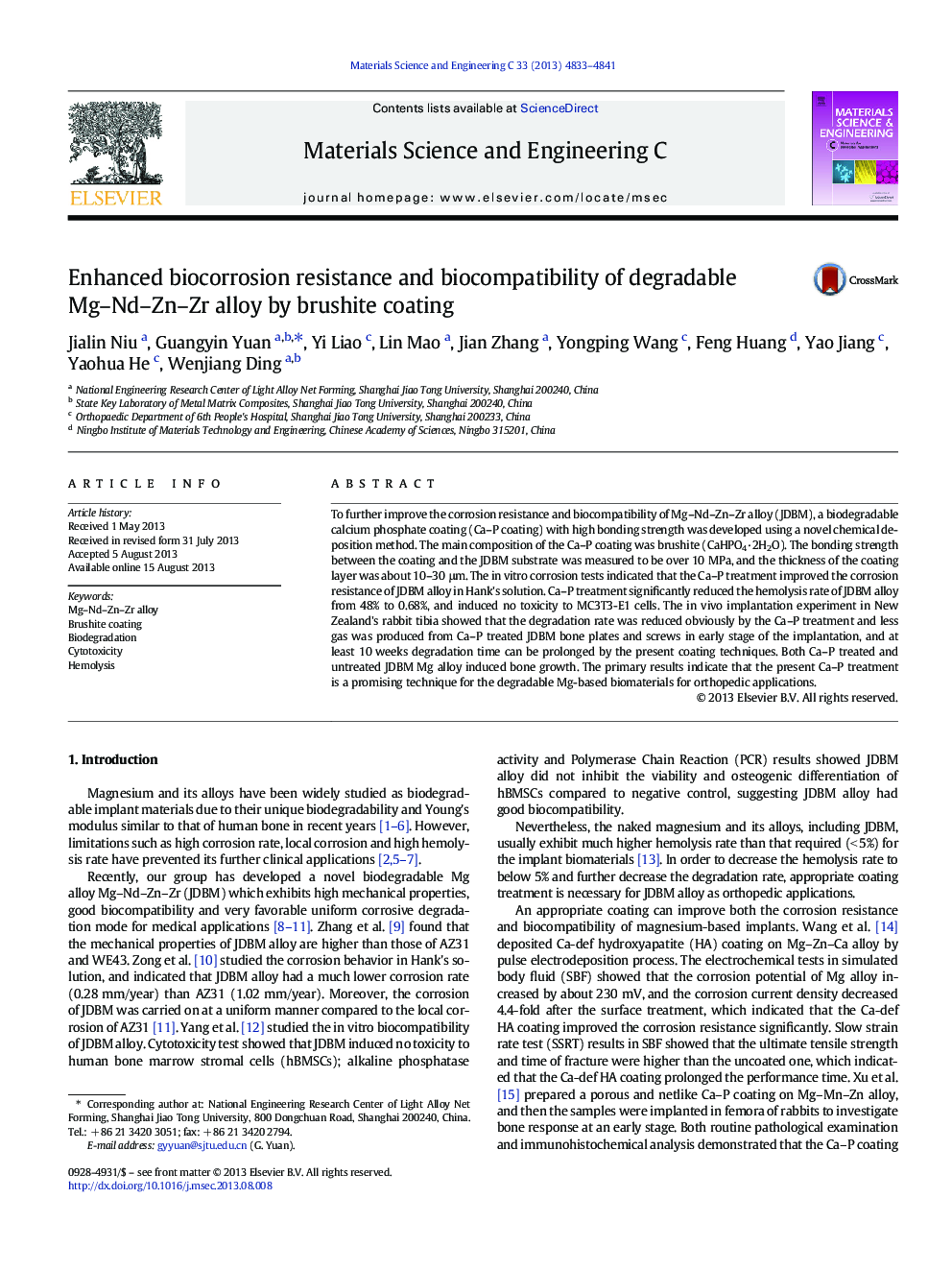| Article ID | Journal | Published Year | Pages | File Type |
|---|---|---|---|---|
| 1429508 | Materials Science and Engineering: C | 2013 | 9 Pages |
•A brushite coating was successfully developed on Mg–Nd–Zn–Zr alloy.•The hemolysis rate of JDBM alloy is significantly reduced from 48% to 0.68%.•Over 10 weeks in vivo degradation time for JDBM can be prolonged by the coating.
To further improve the corrosion resistance and biocompatibility of Mg–Nd–Zn–Zr alloy (JDBM), a biodegradable calcium phosphate coating (Ca–P coating) with high bonding strength was developed using a novel chemical deposition method. The main composition of the Ca–P coating was brushite (CaHPO4·2H2O). The bonding strength between the coating and the JDBM substrate was measured to be over 10 MPa, and the thickness of the coating layer was about 10–30 μm. The in vitro corrosion tests indicated that the Ca–P treatment improved the corrosion resistance of JDBM alloy in Hank's solution. Ca–P treatment significantly reduced the hemolysis rate of JDBM alloy from 48% to 0.68%, and induced no toxicity to MC3T3-E1 cells. The in vivo implantation experiment in New Zealand's rabbit tibia showed that the degradation rate was reduced obviously by the Ca–P treatment and less gas was produced from Ca–P treated JDBM bone plates and screws in early stage of the implantation, and at least 10 weeks degradation time can be prolonged by the present coating techniques. Both Ca–P treated and untreated JDBM Mg alloy induced bone growth. The primary results indicate that the present Ca–P treatment is a promising technique for the degradable Mg-based biomaterials for orthopedic applications.
Graphical abstractFigure optionsDownload full-size imageDownload as PowerPoint slide
